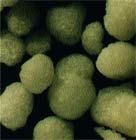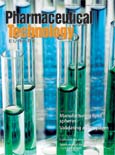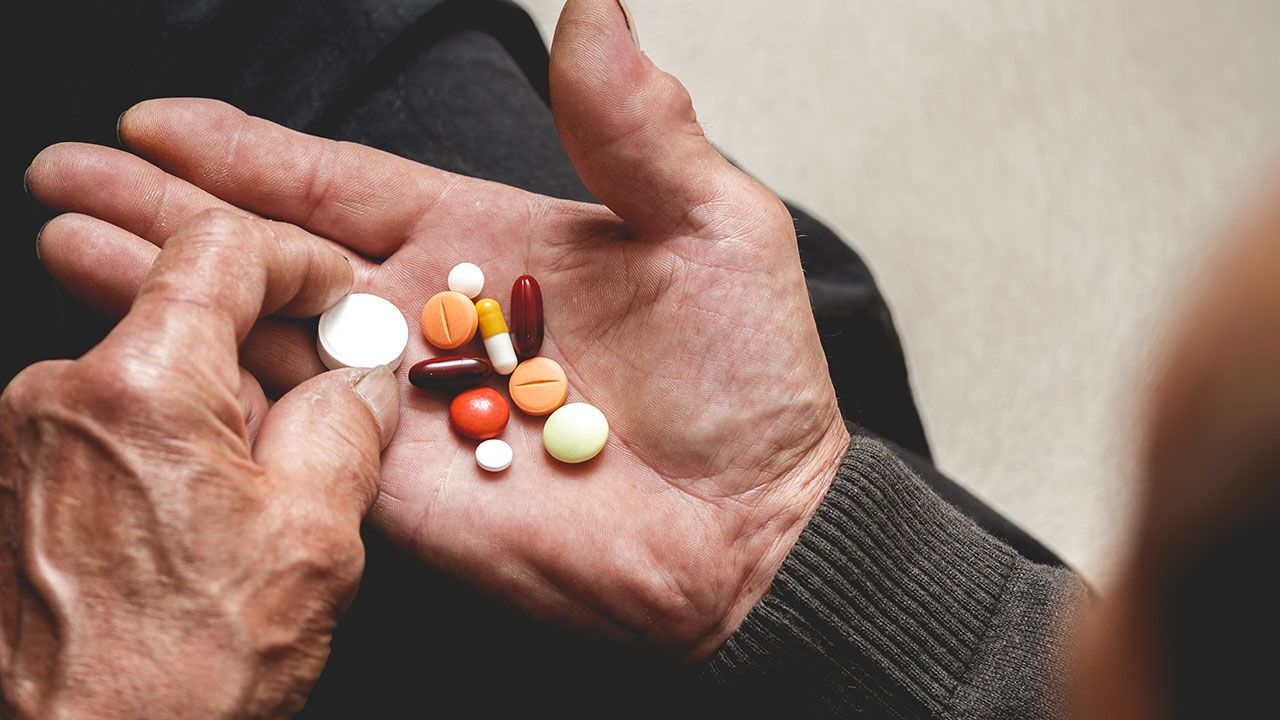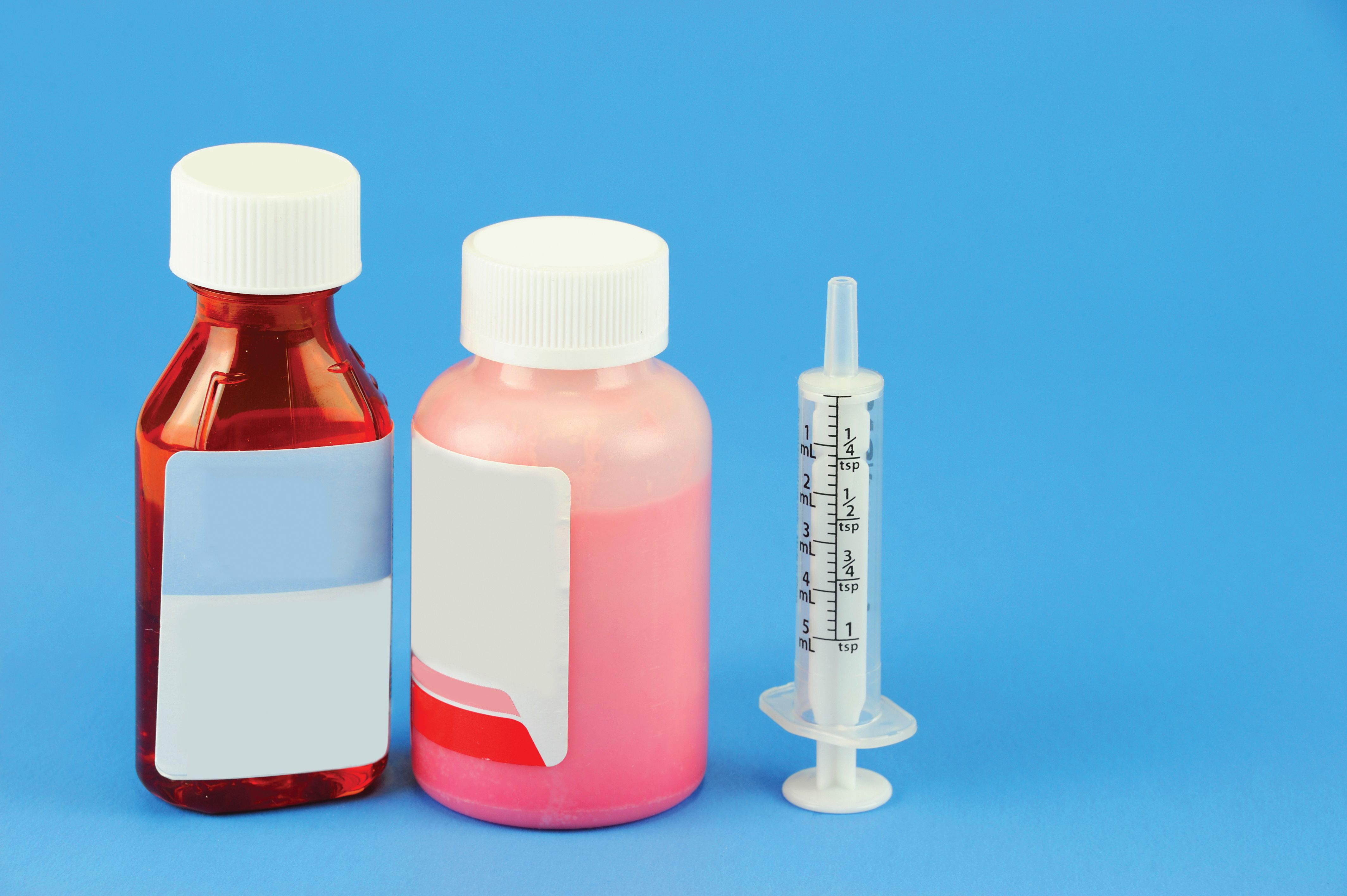News
Article
Pharmaceutical Technology Europe
Pharmaceutical Technology Europe
Manufacture and Dissolution Studies of Lipid Spheres: Part I
Author(s):
Previous articles have presented a general review of the different types of spheres that can be obtained with a rotary fluidized bed process.1,2 This two-part study focusses on lipid spheres that can be prepared using hydrogenated castor oil, as well as examining the feasibility of the process and the main characteristics of the spheres obtained.
The terms microsphere, microbead and microcapsule have been used by dosage form suppliers in the past to describe multiparticulate pharmaceutical forms covering a broad range of preparation methods and appearances. In 1990, the French Pharmacopoeia coined the term "drug spheroids"3 to categorize particulates less than 2.8 mm in diameter that contain one or more active ingredients in a solid support, such as an excipient matrix, a delivery container (reservoir or capsules) or both. Now, the generic term "spheres" is used to describe all these forms, regardless of their structure or how they are prepared.4 Only a size classification is to be maintained: minispheres (diameter 1-2.8 mm), microspheres (diameter 1 µm-1 mm) and nano-spheres (,0.1 µm in diameter).
Rotary fluidized bed granulation is a method of preparing spheres in a continuous process and is based on a wet granulation process by which a powder is agglomerated with a liquid and a binder, and is continually in contact with dried hot air. One of the main advantages of this method is that the different steps all occur in a single device and in one process. All the operations are performed by the successive introduction of the different components, which are mixed, wetted, agglomerated and dried in a fluidized bed whilst being continuously suspended in air and finally spheronized by a rotor.5-7 This process can also be completed by coating the spheres. Previous tests have been conducted to determine different excipients that could be used to produce spheres with matrix or fizzy characteristics.1,2,8 One of the most interesting components, hydrogenated castor oil (HCO), is the focus of this article.

Figure 1: Rotary tangential spray granulator schematic.
Materials and method
Equipment. The rotary fluidized bed was originally conceived as a combined high-shear mixer-granulator and fluidized bed dryer. The rotor insert comprises a cylinder with a solid rotating disc at its base (Figure 1). Three forces act on the materials to produce a fluidization pattern best described as a spiralling helix.5,6,8 The rotation of the disc spins the substrate out to the edge of the disc, which combines powder granulation and sphere formation. Then, when the pulverization is finished, the spheres are dried.
Method. The excipient and active drug, in powder form, were both placed in the rotor. A 5 min mixing time preceded the pulverization of the wetting liquid. A peristaltic pump was used to accurately determine and deliver the wetting liquid.

Table I: Formulations and main results of spheres with lipid excipient content.
For all the trials, a Glatt GPCG 1 rotary granulator (Glatt GmbH, Binzen, Germany) with a nozzle aperture of 1.2 mm was used. The main functional parameters were atomizer air pressure on entry (4 bar); air temperature (0 °C during pulverization and 20 °C during drying); disc rotation speed (1080 rpm during pulverization and 180 during drying) (Table I). These parameters were determined by previous studies for the lipid component. Because of the physicochemical characteristics of the lipid component, the air temperature was required to be 0 °C at the GPCG 1 command system - which corresponded to the inlet room temperature - then 20 °C during drying.
Quality evaluation of the product
To evaluate the feasibility of the process, a number of parameters were considered.

Figure 2: Sphere size distribution of batches ML11, ML12 and T4 and Figure 3: Sphere size distribution of batches T8 and T9.
- For each formulation, sphere size distribution was determined by sieve analysis on approximately 100 g of spheres using sieves of 0.315, 0.5, 0.63, 0.8 and 1.25 mm. This served to evaluate the yield.
- The external aspect of the spheres was assessed by direct observation with a magnifying glass and were sized using a microscope.
A sphericity coefficient was obtained (cross-measurement) on 5-10 pellets.
- The percentage of recovered product yields (total and useful) were measured and the parameters were evaluated as a function of sphere size. For example, useful spheres were selected between 0.315-0.8 mm and were more appropriate for tabletting.
YT (total yield)5weight of spheres ,2.5 mm/dry powder weight
YU (useful yield)5weight of spheres 0.315–0.8 mm/dry powder weight.
- The drug dissolution rate was determined according to the pharmacopoeia methods - paddle apparatus and flow through cell - on approximately 300 mg of spheres from each size with a dissolution medium of deionized water (paddle method 100 mL water, 37 °C and 60 rpm paddle rate).
For the flow through cell method, spheres were placed above glass beads and deionized water was used as a dissolution medium with a pump flow of 30 mL/min.

Figure 4: Sphere size distribution of batches T11 and T12.
Results and discussion
As HCO was the lipid excipient used in previous studies,8,9 it was selected as the main excipient in different formulations containing theophylline as the active drug tracer and polyvinylpyrrolidone as the binder. Two different pulverization liquids, ethanol and deionized water, were tested (Table I).

Figure 5: T8 spheres in the range 0.63-0.8 mm (360).
These processes confirmed that HCO is a good excipient to obtain lipid spheres using the rotary fluidized bed method. The first formulation (ML11) gave good results that could not be confirmed with a larger batch of powder (ML12) - in which too many fine elements appeared during the drying phase. This observation suggested a decrease in the rotation speed of the disc during the drying phase to preserve the fabricated spheres from erosion, which was confirmed with batches T4, T8 and T9 that showed good, useful yields. Replacing 80% ethanol with deionized water resulted in the quick formation of spheres, which were difficult to preserve from erosion during the drying phase. These observations were confirmed by the particle size distribution of the batches (Figures 2–4) in which a significant number of fractions below 0.5 mm for batches ML11, ML12 and T4 could be seen. Good reproducibility of sphere size distribution was then observed for batches T8 and T9. For batches T11 and T12, sphere distributions were not very homogeneous when water was used as the pulverization liquid.

Figure 6: T12 spheres in the range 0.63-0.8 mm (360).
The morphological study of the spheres did not show significant differences between batches formulated with water or ethanol. All the lipid spheres had a good spherical aspect with a sphericity coefficient close to 1 (1.064 for ML11, 1.05 for ML12, 1.054 for T4, 0.955 for T8 and 1.029 for T12) (Figures 5 and 6).
In vitro dissolutions were conducted first (using the paddle method) to note the influence of the formulation (type of liquid pulverization) and the particle size distribution of spheres on the dissolution of the drug tracer, theophylline. Samples of spheres ranging in size from 0.315-0.8 mm were studied and similar dissolution profiles were observed with batches using ethanol as the pulverization liquid, regardless of batch size (Figure 7). Some differences were observed in the spheres' kinetic profiles from batches of 400 g and 1000 g formulated with water (Figure 8).

Figure 7: Release kinetics of 300 mg of spheres of size 0.315-0.8 mm (batches using ethanol as the pulverization liquid) (paddle apparatus, 1000 mL H20, 37 ðC and 60 rpm).
The use of different pulverization liquids may account for the different dissolution profiles, but the influence of particle size distribution of spheres on the dissolution profiles of drug tracer was observed during the study. First, trials were conducted on spheres ranging in size from 0.315-0.8 mm to 0.315-0.5 mm. No significant differences were noted for batches of similar formulations (85% HCO-ethanol) except the 400 g (ML11) and 1000 g (T4 and T8) batch sizes (Figures 9-11).
Conversely, when deionized water was used for a 1000 g batch (T12), a difference between dissolution fractions tested was observed. After 60 min, 85% of the active was released from the 0.315-0.5 mm range fraction, but only 21% was released from the 0.315-0.8 mm fraction (Figure 12).

Figure 8: Release kinetics of 300 mg of spheres of size 0.315-0.8 mm (batches using deionized water as the pulverization liquid) (paddle apparatus, 1000 mL H20, 37 ðC and 60 rpm) and Figure 9: Release kinetics of 300 mg of spheres of size 0.315-0.8 mm and 0.315-0.5 mm (batch 400 g using ethanol as the pulverization liquid) (paddle apparatus, 1000 mL H20, 37 ðC and 60 rpm).
Other dissolution tests were performed on two different fraction sizes: 0.315–0.5 mm and 0.8–1.25 mm with batches T8 (batch 1000 g using ethanol as the pulverization liquid) and T12 (batch 1000 g using deionized water as the pulverization liquid). Different dissolution profiles were observed, correlating with the size of spheres tested; dissolution profiles of small-sized lipid spheres were twice as fast compared with those observed with bigger sphere sizes. This was constant irrespective of the pulverization liquid, but was accentuated with the deionized water batches (Figures 13 and 14).
Lipid spheres floated on the surface of the dissolution medium during the dissolution testing, which may reflect the differences observed in the dissolution profiles. Comparisons between batches T8 and T12 for the same size (0.315–0.5 mm and 0.8–1.25 mm) were made. Similar dissolution profiles were observed for lower fraction sphere sizes (0.315–0.5 mm), but some differences were observed on a larger sphere size range (0.8–1.25 mm) (Figures 15 and 16). The same difference in release profiles was observed on the fraction 0.315–0.800 mm of batches T8 and T12 (Figure 17).

Figure 10: Release kinetics of 300 mg of spheres of size 0.315-0.8 mm and 0.315-0.5 mm (batch 1000 g using ethanol as the pulverization liquid) (paddle apparatus, 1000 mL H20, 37 ðC and 60 rpm) and Figure 11: Release kinetics of 300 mg of spheres of size 0.315-0.8 mm and 0.315-0.5 mm (batch 1000 g using ethanol as the pulverization liquid) (paddle apparatus, 1000 mL H20, 37 ðC and 60 rpm).
Conclusion
Variation of the drug dissolution profiles was observed and could not be correlated with the difference in pulverization liquid. The fact that lipid spheres floated on the surface of the dissolution medium could explain the kinetic differences when correlated with the variable surface areas according to sphere size. The differences observed with the various sphere size ranges could also confirm this hypothesis because a faster drug release dissolution was observed with small-range sphere sizes, which present a larger surface area to the dissolution medium. Conversely, with bigger fraction sizes there were fewer spheres in the same sample weight (always 300 mg) and a lower global surface area, leading to slower release profiles.

Figure 12: Release kinetics of 300 mg of spheres of size 0.315-0.8 mm and 0.315-0.5 mm (batch 1000 g using water as the pulverization liquid) (paddle apparatus, 1000 mL H20, 37 ðC and 60 rpm) and Figure 13: Release kinetics of 300 mg of spheres of size 0.315-0.5 mm and 0.8-1.25 mm (batch 1000 g using ethanol as the pulverization liquid) (paddle apparatus, 1000 mL H20, 37 ðC and 60 rpm).
The kinetic release difference between T11 and T12 could be correlated with the significance of the 0.5 mm fraction in the T12 batch (Figure 4). To confirm these hypotheses and to try to moderate sphere floating, the dissolution study was continued with the flow through cell method. The most important benefit of using flow through cell apparatus for the kinetics of spheres is that it regulates the liquid flow that goes through the sphere samples and a homogeneous contact surface can be evaluated. Batches T8 and T12 were controlled with sphere sizes ranging from 0.315-0.5 mm to 0.8-1.25 mm. Similar dissolution profiles were observed for batch T8 irrespective of the sphere size range (Figure 18). Different kinetic profiles were observed with batch T12 - the small size fraction showed a faster release of drug from spheres of smaller sizes (Figure 19).

Figure 14: Release kinetics of 300 mg of spheres of size 0.315-0.5 mm and 0.8-1.25 mm (batch 1000 g using water as the pulverization liquid) (paddle apparatus, 1000 mL H20, 37 ðC and 60 rpm) and Figure 15: Release kinetics of 300 mg of spheres of size 0.315-0.5 mm (batch 1000 g using ethanol T8 and water T12 as the pulverization liquid) (paddle apparatus, 1000 mL H20, 37 ðC and 60 rpm).
This flow through cell dissolution study confirmed the results obtained with the paddle method. Regardless of sphere fraction size, good release profile reproducibility was observed when the rotogranulation was conducted with ethanol (batch T8, Figure 18). When water was used as a pulverization liquid, there was a difference in the release of drug tracer and the fraction of smaller size spheres (0.315–0.5 mm) had a faster dissolution profile (batch T12, Figure 19). These differences could be correlated with the formulation and not with the size range.

Figure 16: Release kinetics of 300 mg of spheres of size 0.8-1.25 mm (batch 1000 g using ethanol T8 and water T12 as the pulverization liquid) (paddle apparatus, 1000 mL H20, 37 ðC and 60 rpm) and Figure 17: Release kinetics of 300 mg of spheres of size 0.315-0.8 mm (batch 1000 g using ethanol T8 and water T12 as the pulverization liquid) (paddle apparatus, 1000 mL H20, 37 ðC and 60 rpm).
This initial study has shown good kinetic reproducibility of the release of the active drug from spheres, regardless of the batch size manufactured, highlighting the benefit of using HCO as a lipophilic component for the manufacture of spheres by the rotary fluidized process.
HCO permits the preparation of spheres with good reproducibility. Spheres obtained have a good morphological aspect and prolonged drug release profiles corresponding to "micromatrix" properties.

Figure 18: Release kinetics of 300 mg of batch T8 spheres of size 0.315-0.5 mm and 0.8-1.25 mm (batch 1000 g using ethanol as the pulverization liquid) (flow through cell, 1000 mL H20, 37 ðC and 30 mL/mm) and Figure 19: Release kinetics of 300 mg of batch T12 spheres of size 0.315-0.5 mm and 0.8-1.25 mm (batch 1000 g using water as the pulverization liquid) (flow through cell, 1000 mL H20, 37 ðC and 30 mL/mm).
References
1. P. Gauthier and J.M. Aiache, "Applications of Rotary Fluidized Bed Processing, Part I: Manufacturing Spheres," Pharm. Technol. Eur. 13(9) 22-34 (2001).
2. P. Gauthier and J.M. Aiache, "Applications of Rotary Fluidized Bed Processing, Part II: Fizzy Spheres," Pharm. Technol. Eur. 13(10) 32-37 (2001).
3. "Spheroids Medicamenteux," Pharmacopee Francaise, Xeme Edition (1990).
4. Pharmacopee Europeenne (Conseil de L'Europe, Strasbourg, France, 1999).
5. J. Swarbrick and J.C. Boylan, Eds., The Encyclopedia of Pharmaceutical Technology, Volume 7 (Marcel Dekker, Inc., New York, New York, USA, 1992) p 484.
6. T. Magnet, "La Granulation en Rotogranulateur ýit d'Air Fluidise: Application a ýDifferentes Formulations d'Hydrochlorothiazide (These Pharm., Lyon, France, n° 104, 1990) pp 146 ff.
7. J. Kristensen, PhD Thesis, Danish University of Pharmaceutical Sciences, Copenhagen, Denmark (2001).
8. P. Gauthier, Formulation de Microspheres de Principes Actifs en Rotogranulation - Etude de Divers Excipients (These Pharm., Clermont-Ferrand, France, 1995) pp 283 ff.
9. P. Gauthier, B. Paillard and J.M. Aiache, "Procede de Fabrication de Microspheres Matricielles a Liberation Prolongeequot; Brevet Francais, n° 9515362 Depose le 22 December 1995.

Newsletter
Get the essential updates shaping the future of pharma manufacturing and compliance—subscribe today to Pharmaceutical Technology and never miss a breakthrough.




